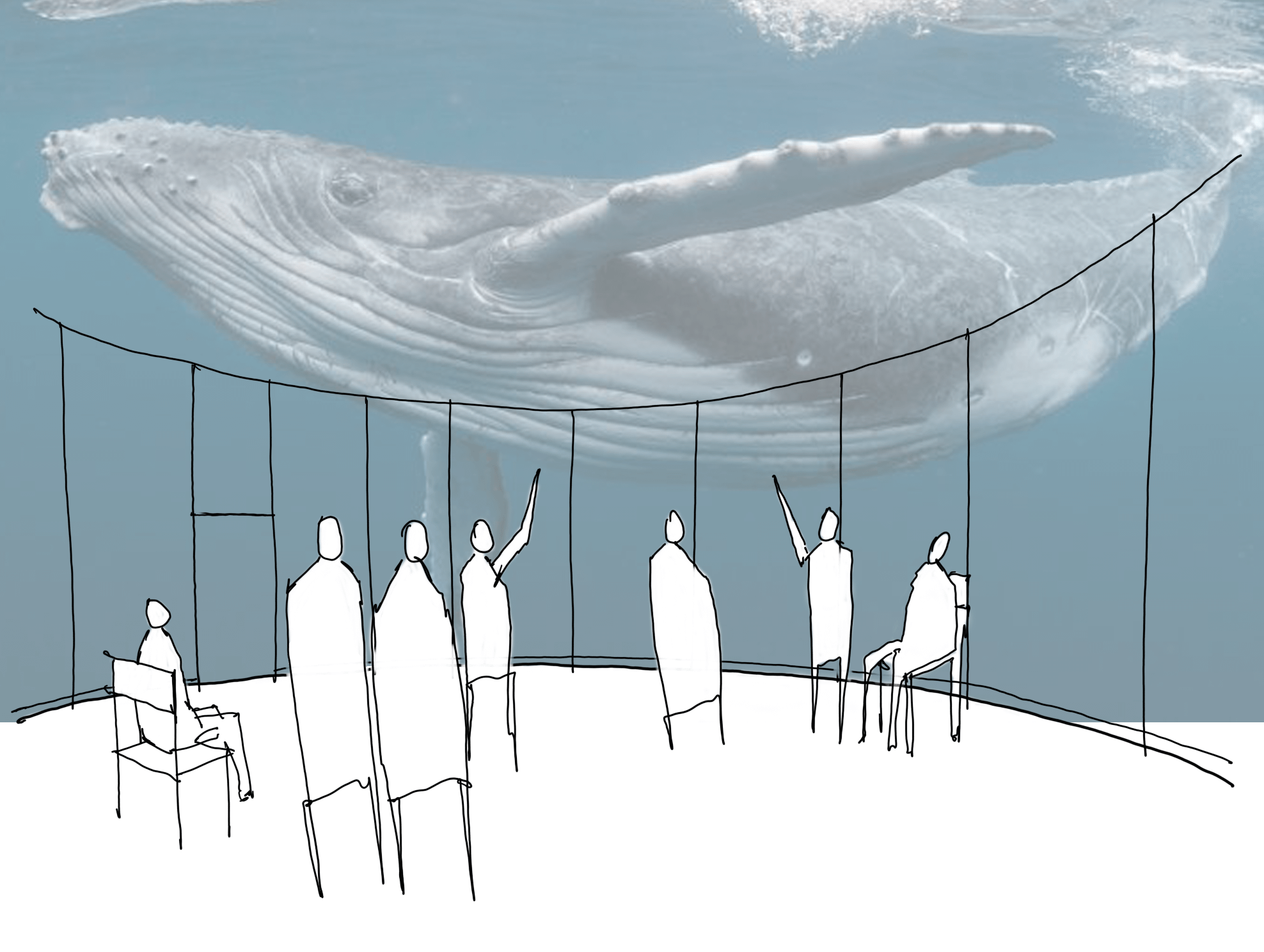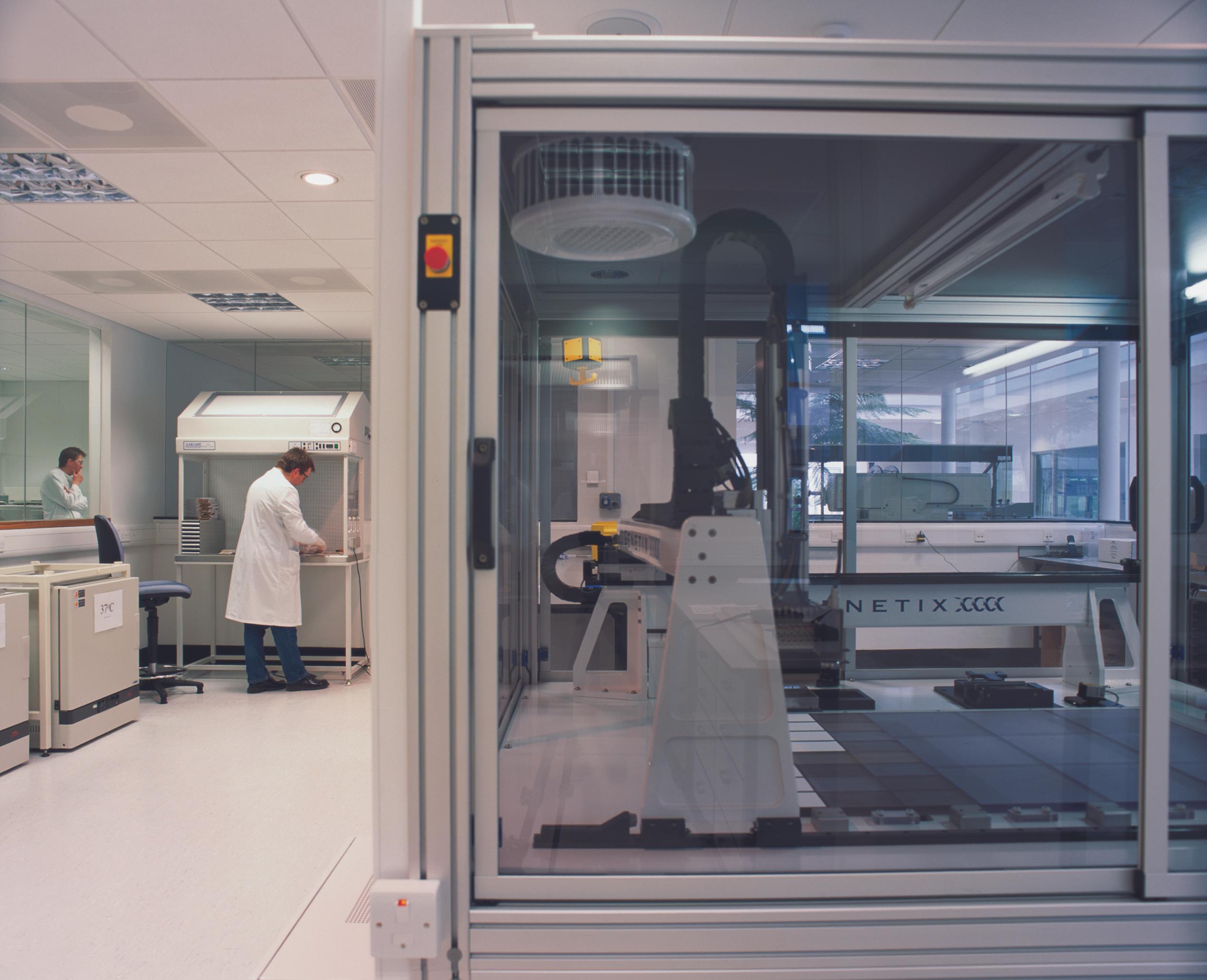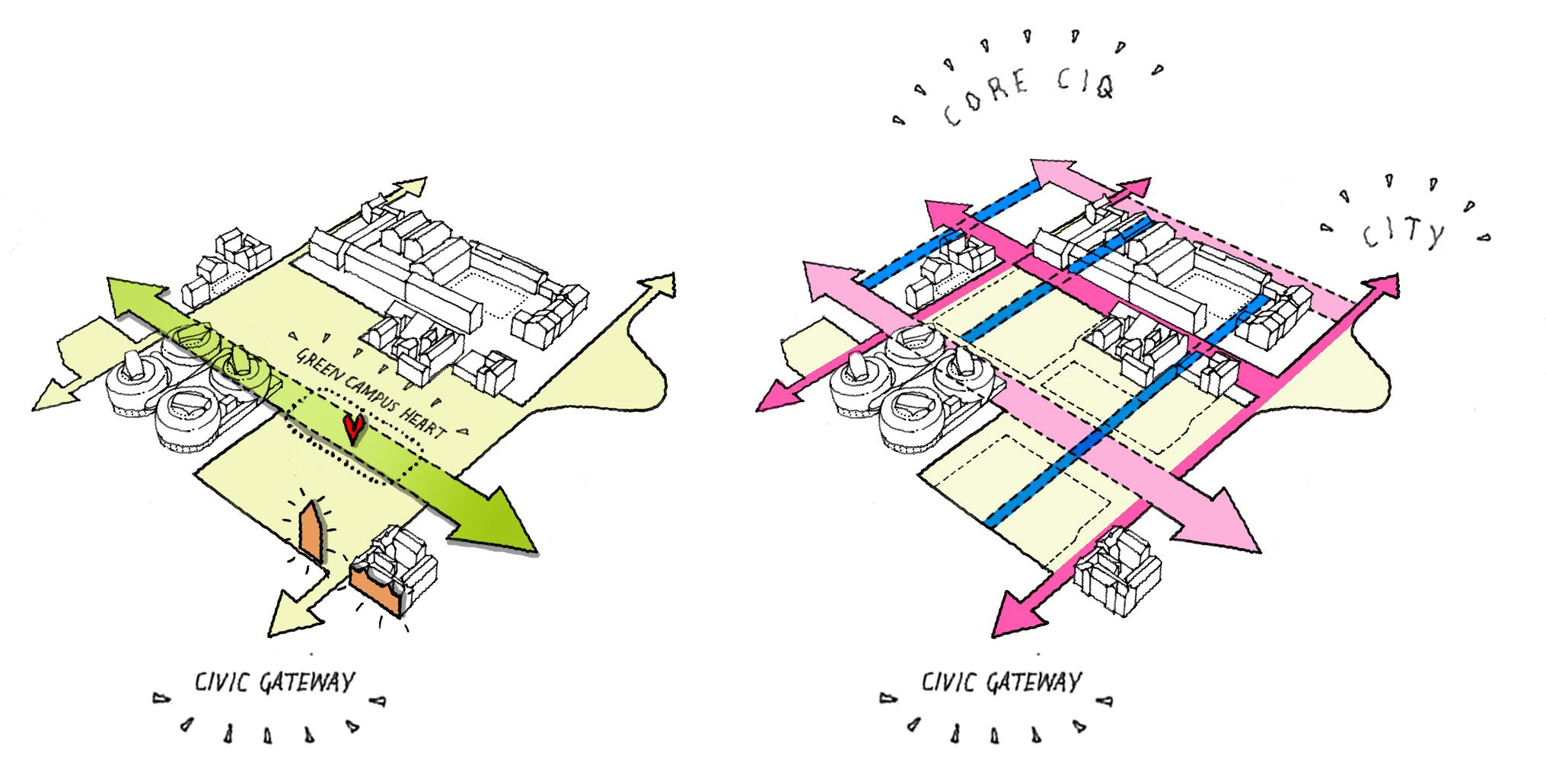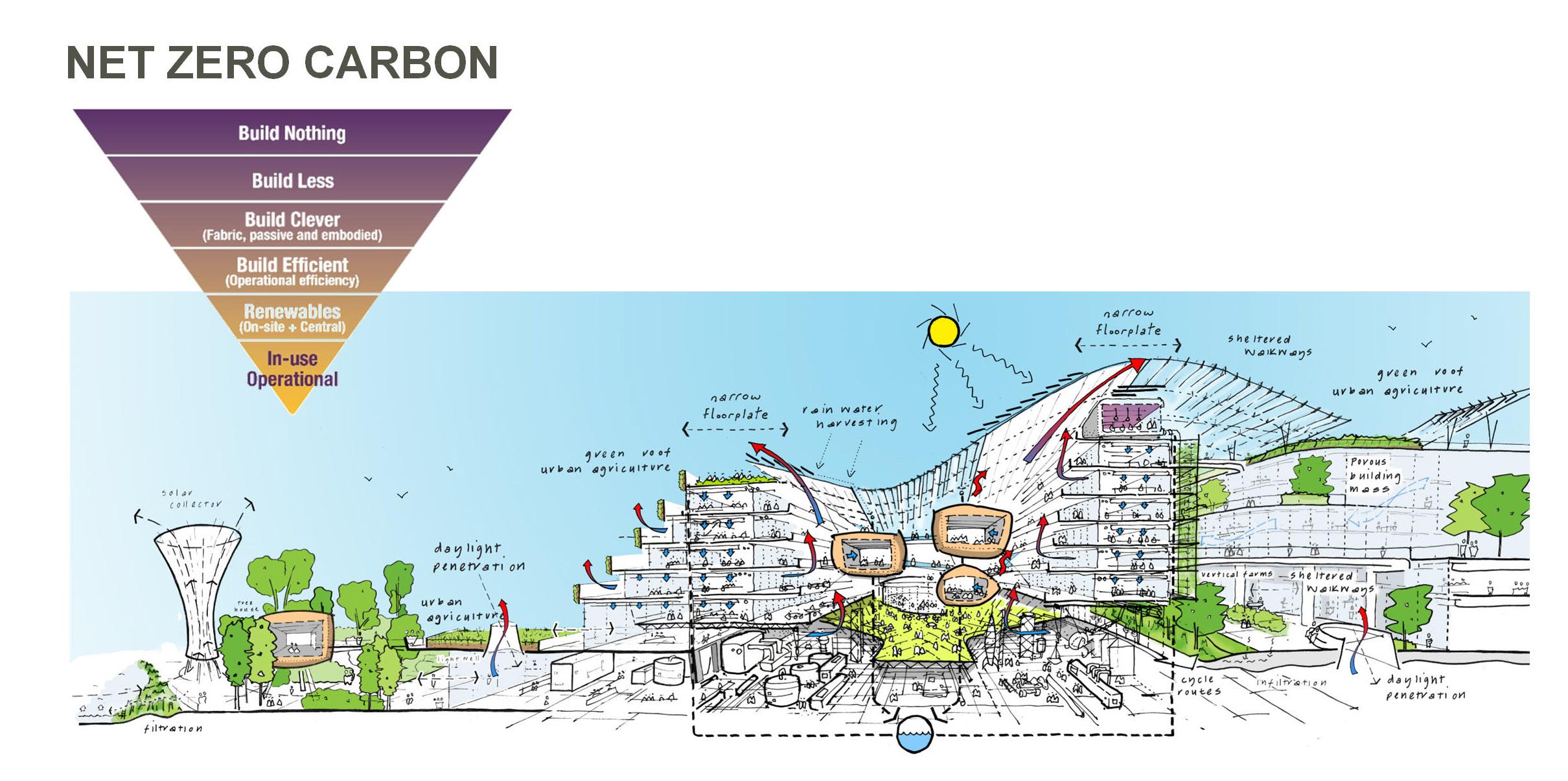How do our existing university campuses need to evolve to serve a new kind of learner, one who has access to more information than ever before, in a time when the rate of change is faster than the learner’s ability to adapt? The way we teach and learn is evolving, and Covid-19 has accelerated that change by impacting the physical space where education happens.
We are in the midst of the Information Age. Technological advancements abound, and we face complex, multi-faceted challenges and crises as a society. The traditional teacher-centric style of education, heavy on memorization and top-down lecturing, which was the foundation of existing campus design, has shifted to one in which the boundaries between student and teacher have become blurred. We need to rewire our institutions to enable us to optimize our learning.

Why do classrooms look the same as they did in this photo from the early 1900s? The teaching models of previous centuries are no longer aligned with the reality of 21st century life.
Let’s look at three paradigm shifts which need to be considered when designing physical spaces for education in the 21st century.
Technology and Media
Technology and media need to be central to all places of learning. Where being physically present in the classroom between set hours was necessary in historic educational models, students now need the ability to stream pre-recorded content when it suits them, to join in remotely in real time, or to collaborate in shared spaces with colleagues from other places.
Campus teaching spaces need an advanced level of connectivity, technology, and virtual collaboration tools to promote these hybrid interactions. Teachers need spaces to record structured content for students to learn at their own pace. Classrooms need an advanced level of connectivity and displays to review materials and collaborate on research.
Teaching can now be more intuitive and interactive. New learning spaces will facilitate users’ immersion in an environment. Students can use multiple media sources simultaneously, working alongside people from different disciplines who are solving very different problems, alone or in groups.

It’s time to fully embrace technology in education. Pictured: an imagining of a fully immersive projected media experience.
This new hybrid learning model reduces capacity needs, so classrooms can be smaller. A range of other spaces will be needed to accommodate large groups for joint work as well as smaller private spaces for concentrated work. Spaces need to be flexible, and interdisciplinary. Just like emerging workplaces post-pandemic, learning environments will become hybrid environments.
Continuous Innovation and the Lab
The issues we will collectively face in the 21st century and beyond are daunting to say the least – whether it’s climate change, scarcity, or mass migration, the challenges are complex and interconnected, and as such we need to equip our future leaders with the ability to innovate, collaborate and communicate. Together with creativity and insight, these are the critical skills we need in abundance if we are to overcome existential threats such as climate change, already underway. University campuses optimized for creative collisions have the potential to remain at the hub of this innovation.
New spaces need to be designed to create collaborative environments where interdisciplinary cross-pollination is encouraged. It is time to blur the boundaries between traditionally siloed faculties and organize the campus around activities and specialisms rather than departments. Solutions often arise out of the most unexpected places. Who knows what breakthroughs may occur if you foster an environment where the sharpest minds with diverse expertise bump into each other day after day!

Organizing school spaces by function rather than discipline encourages creative collisions and innovation.
Careful consideration should be given to the connective tissue within buildings to optimize the opportunity for these creative collisions. Corridors, stairs, landings, and lobbies could become places of exchange, education, and exhibition.
Multidisciplinary labs, immersed in technology, would replace the traditional lab, requiring more storage space so they could be shared by more faculties, which would lend itself to spark conversations and ideas. At the same time, deeply specialized labs are becoming incredibly complex with requirements beyond building codes and standards, driven by technology and machine comfort rather than human comfort. The experiments and equipment in these labs need careful consideration and coordination for successful project delivery.

Laboratories require some of the most exacting design specifications on the planet due to their varied needs and purposes. Pictured: the John Innes Genome Centre by BDP
These labs are where innovation and new research take place and they attract vital funding. Their importance to these institutions cannot be understated.
Refocusing the Purpose of the Physical Campus
With the introduction of hybrid working and learning, the purpose of the physical campus needs to be refocused to create a strong sense of identity that attracts students, faculty, and private enterprise. Campuses must provide places to gather, socialize and collaborate in a way that is inclusive and considerate of the wellbeing of students and faculty.
Focusing the campus redesign on net zero carbon will also be key to remaining relevant and adaptable in the face of the climate emergency.
These hubs of innovation can invite community engagement through permeable streetscapes and buildings that are welcoming and accessible to all. High quality green spaces and public realm become increasingly important to consider for student health and wellness, as well as stitching universities together and further linking campuses to their local communities.

The connection of campuses to their surrounding communities will be key to increasing innovation and transparency.
With the increase in self-directed and online learning, BDP estimates that indoor space for workplace and general teaching will decrease by 25-35%. Existing facilities may not be designed or well suited to accommodate this change, so the campus must be carefully studied and master planned to maximize its potential. This offers the perfect opportunity to look at the campus holistically, including the creation of a comprehensive roadmap to net zero carbon for the campus. The remaining buildings must create a sense of identity for the institution and give a sense of belonging to the university.

The net zero campus will be key to staying relevant and resilient in the future.
In conclusion…
The hybrid model of teaching and learning is here to stay, and so we must adapt accordingly. We need to rewire our institutions to optimize learning through the application of technology and media. Labs as well as the interstitial spaces across campus must be designed to inspire continuous innovation and cross-pollination of ideas. It is also time to blur boundaries between faculties, and to allow more interaction between educational institutions and the community at large.
The education sector will play a key role in helping society overcome the challenges ahead of us in the coming decades - let's make sure it is up to the task.

A fully master planned campus of the future
Written by
Mauro Carreño